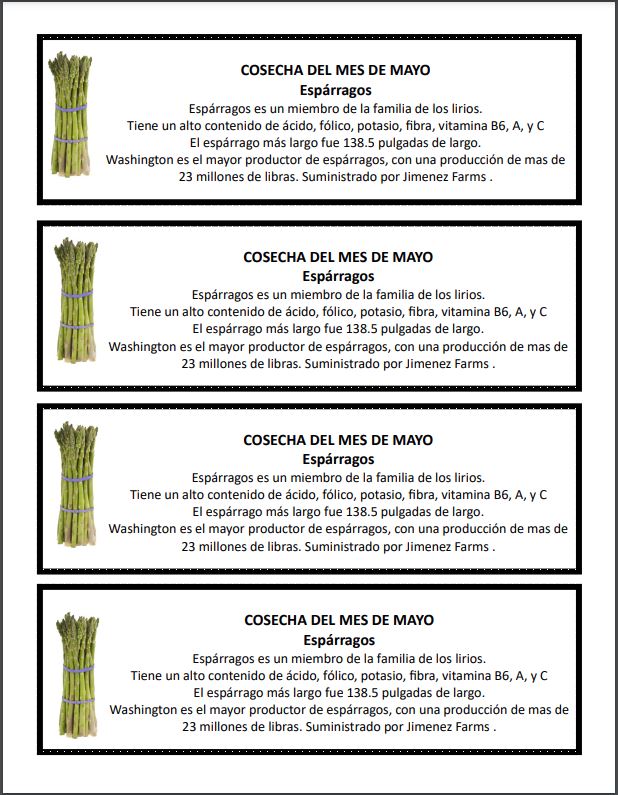Programs/Schedule of Events
Farm to School
The week of May 15th, 2023 we will be featuring local Purple Asparagus from Jimenez Farms.
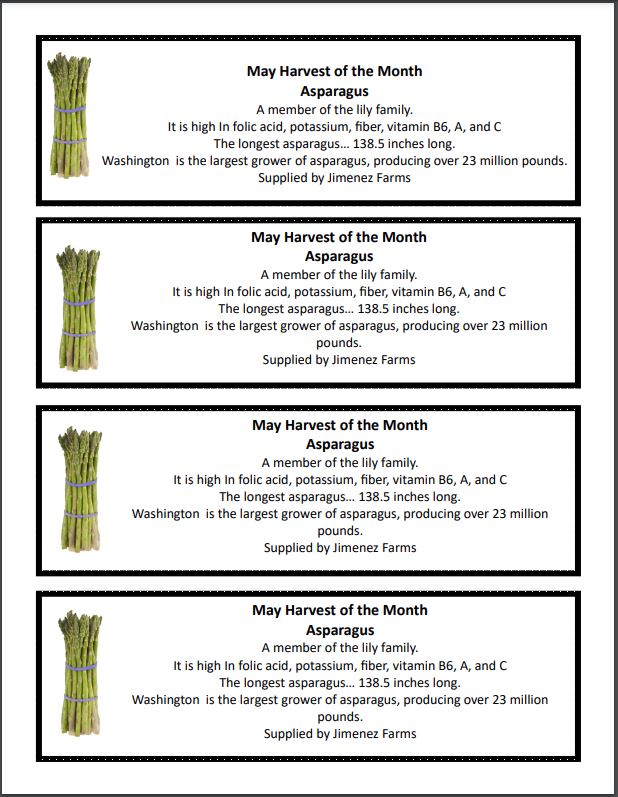
Taste Washington Day
Harvest of the Month
Harvest of the Month
Fruits & Vegetables
Apples
Plums
Peaches
Pears
Winter Squash
Garbanzo Beans
Lentils
Asparagus
Carrot
Potatoes
Tomato
No Harvest of the Month
Harvest of the Month Tasting Tables
(How-To Courtesy of Corvallis Environmental Center)
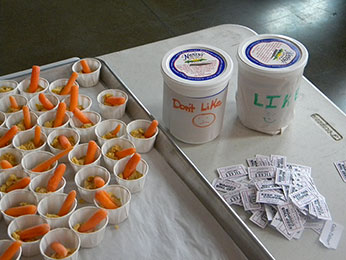 Tasting tables are a fun, easy way to teach students about healthy eating and local farms. Tasting tables take about 4 hours per month to plan, prep, and serve. Here is an outline of how the process works:
Tasting tables are a fun, easy way to teach students about healthy eating and local farms. Tasting tables take about 4 hours per month to plan, prep, and serve. Here is an outline of how the process works:
In general, the food for the tasting table will be delivered from the district warehouse to the school cafeteria on a set day of each month.
Two weeks before your first table date:
- Check in with Beth Thiel (bthiel@wwps.org) to let her know that you will be the volunteer who should receive all tasting table information. Receive tri-fold display board and the month’s promotional materials.
- Contact the following individuals to describe the tasting table and your valiant volunteer work:
- School kitchen staff
- School principal
- Meet with school kitchen and janitorial staff to discuss day-of logistics including where to get a table, where to place the table for best access and traffic flow, where to get serving trays, trash/compost bins, and any other materials you might need from the kitchen.
- Recruit 1-2 parent volunteers to help if necessary (dependant on product and tasting process)
- Post information on your school calendar.
One week before your table date:
- Submit a morning announcement to school office staff telling students and staff to stop by the tasting table during lunch to try fresh, local food from the farm.
- Create tri-fold display board (provided) using Harvest of the Month materials sent/delivered to you by Beth. Some months will include voting containers and tickets for students to vote their opinion about the food.
- If the school is willing, post the same materials you use on the tri-fold board on a bulletin board in the cafeteria or in the school hallway.
Week of the table:
- Attend the tasting table materials preparation day (date/time/location to be announced). Information about the specifics of this prep day will be sent to you by Beth and may not always be necessary.
Day of the table:
- Arrive 30 minutes before the start of lunch to set up: assemble table and get food from kitchen staff.
- Set up the tri-fold display at the table that contains information about nutrition, the farm, and fun facts about the product (you should have received these documents from Beth Thiel).
- Serve the kids and talk to them about trying new things and eating fresh food from a farm. Have fun!
- Clean up all dishes. Give extra food to volunteers and kitchen staff who helped out or ask the kitchen staff if they can use the extra samples on their salad bar.
For more information, please contact Beth Thiel at 509-525-0969 or email bthiel@wwps.org
Farm Field Trips for 3rd Grade
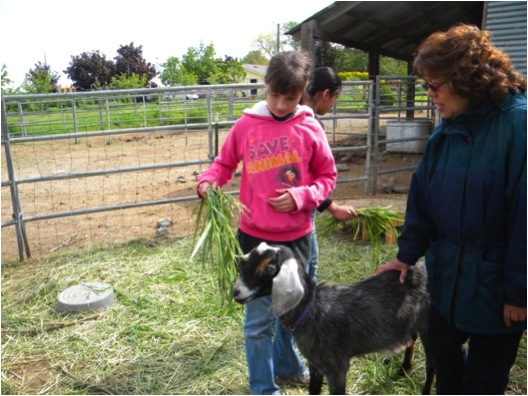
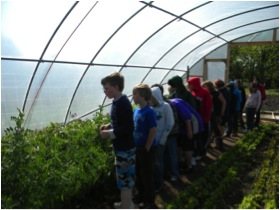
School Farm Field Trip Schedule Spring 2014:
Chef in School Program
Without the donated time, inspiration and expertise of five area chefs, this project would not have been possible. Their interest and dedication in helping school cafeterias is greatly appreciated! This program has provided confidence to pursue challenging changes in school lunches.
Five chefs worked with five elementary schools to demonstrate separate dishes with diverse flavor profiles. To start the program, Cooking with California Food in K-12 Schools published by Ecotrust, was introduced to the chefs to open the discussion about developing new dishes. This publication was written to guide menu planning around six basic dishes, five cultural flavor profiles, and four seasons. It describes ingredients common in the 5 cultural flavor profiles, the benefits of using seasonal produce, and provides 50 recipes of these six dishes (pasta, soup, salad, wraps, pizza and rice bowls). The objective is to inspire cooks to develop new recipes incorporating fresh, seasonal food in all meals offered to young people.
Based on this publication, local Walla Walla Chefs, in collaboration with school kitchen managers, developed their own recipes of five of the six described dishes.
Goals:
- To develop new recipes for scratch cooked cafeteria menu items that incorporate local produce and underutilized commodity items, while meeting Nation School Lunch Program (NSLP) requirements.
- To explore district capacity to scratch cook on limited time and money budgets.
- To understand the level of student acceptance of new entrées and in having only one entrée choice.
Method: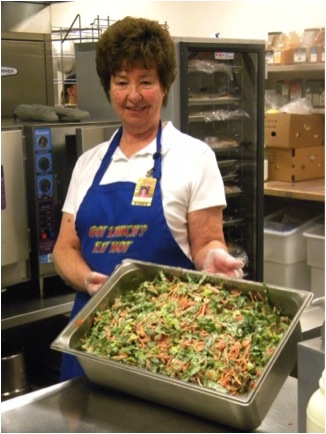
- Two months prior to the beginning of the program, chefs were recruited to take part by simply visiting in person and describing the project.
- A meeting, 6 weeks prior to the first scheduled event, was scheduled between the nutrition services director, the farm to school coordinator and 5 area chefs.
- This meeting outlined the goals of the program, introduced the Ecotrust publication Cooking with CA Food in K-12 School, and described the NSL program nutritional requirements, school kitchen equipment and budget constraints.
- Chefs were matched with elementary schools and afterward contact information was shared between school kitchen managers and their assigned chef. Three of the chefs are parents of children in the school district and worked at their child’s school.
- The chefs and kitchen managers were then encouraged to contact one another to meet at the school to investigate the space and equipment and decide together on a dish.
- Two weeks prior to the scheduled event, the team provided a list of desired ingredients and amounts and determined a schedule of cooking. The farm to school coordinator developed fliers and posters to go home with students. A survey was developed and delivered to principals and teachers with accompanying information about the benefits of the event. Principals were encouraged to include information about the event in morning announcements. Event information was shared with the district weekly newsletter.
- After the event, opinion surveys were collected, evaluated and results were shared with the individual schools kitchen managers, the chef and the nutrition services director.
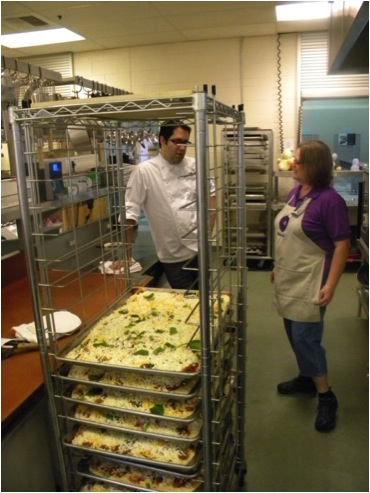
Outcomes:
- Success in creating 5 new entrée recipes cooked entirely from scratch in the school kitchens. The meal ingredients can be altered to accommodate seasonal produce or available commodity products.
- Student opinion surveys on the meals show that students do like meals, and will eat meals, that incorporate vegetables. 60-80 % of the students reported liking the way their meal tasted. Opinion about smell and look of the meal were also surveyed. Although common belief asserts children require repeated exposure to new foods before acceptance, the results of the surveys indicate children’s attitudes toward new and healthy foods are underestimated.
- Scratch cooking on a budget – analysis pending
- Participation rate of school lunch on day with only one entrée – Analysis indicated a considerable increase in the number of full priced lunches for students and adults and no sizeable change to the number of free/reduced priced lunches. Analysis of additional special meal days would provide more significant results, but this initial finding along with the surveys indicating students liked the meal, is important to illustrate participation rates would not necessarily decline because of the menu changes.
- Established relationships with area chefs willing to share their knowledge in:
- Flavoring with herbs and spices to reduce sodium and create wonderful flavor
- Flavoring with sauces and dressing made quickly from scratch
- Waste reduction, useful in stretching budgets, making more funds available for high quality ingredients
- Time saving measures (time is money)
- Cooking technique with specialized equipment, which can increase the diversity of menu items made from scratch. The chefs were generally impressed with the kitchens and equipment available.
- Cooking technique with everyday, unspecialized equipment (knife skills, peeling garlic in a lidded bowl)
- Demonstrating use of kitchen equipment such as griddles and tilt skillets, which are in some schools but used infrequently
- Making broth from scratch for soups, sauces and gravies
These chefs remain interested in helping the nutrition services department with cooking demonstrations, trainings and recipe development.
- List of equipment that would facilitate utilization of local ingredients and scratch cooking
- Robot coupe – a vegetable chopping machine
- Immersion blenders – blending ingredients in the pot or bowl
- Salad spinners – to quickly dry leafy greens after washing
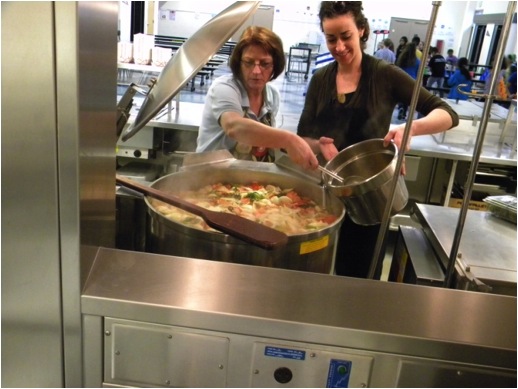
Challenges:
- Chefs don’t use recipes as much as a list of ingredient and a comfort in cooking with whole foods. This can make it difficult to break meals into measured recipes for analysis and to provide a recipe to families interested in making the meal at home.
- Chefs can charge what’s necessary to meet their costs. Chefs were able to minimize expense of the meals. An analysis of these chef meals to estimate the per plate expense, is pending.
- Extra labor was necessary to create most of the Chef in School program meals. As nutrition services staff become more familiar with the recipes and process, and after new time saving equipment is purchased, there will be a new analysis of the time required. Possible time saving measures:
- Use food processors to chop whole vegetables
- Resist portioning items into individual cups. This will save time and money spent on cups.
- Boiling raw chicken rather than baking makes broth for future soup and makes it easier to debone chicken more quickly than if it were baked
- Preparing one main meal with salad bar rather than 3-4 separate entrees that require wrapping. This will save time and money spent on wraps.
If you have any questions about this program, feel free to contact Beth Thiel at bthiel@wwps.org or Pamela Milleson at pmilleson@wwps.org
Follow these easy steps to create a new Chef in School Event:
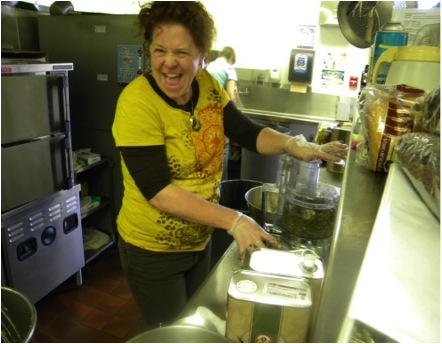 Contact the school or chef that you wish to schedule a cooking event with – don’t be shy!
Contact the school or chef that you wish to schedule a cooking event with – don’t be shy!- Choose a meal/recipe – consider refining the new recipe that has already been introduced if it has been standardized by Pam in the district test kitchen first. Chicken wrap and rice bowl are first in line to be standardized followed by minestrone soup, pasta salad and pizza.
- Choose a day for the meal event to occur (at least 4 weeks away) considering the meals before and after your chosen day for equipment usage and availability
- Visualize the process ensuring the right equipment and the right space is available on the day/days that you will be cooking and that you will have adequate time, space and person power.
- Identify quantities of product required and order 2 weeks in advance of the meal event. It may be possible to purchase local foods for the event, so the sooner you order the better.
- Create a flier to post in the school and ½ page fliers to be translated and sent home, or provide information to Beth and request a flier be made. Information to include: meal name, recipe for 4-6, local produce highlighted, date and place of the event and chef name.
- Notify Beth 2 weeks before the meal event if you would like taste test surveys to be conducted or need a volunteer to assist in the kitchen.
- Have fun, be inspired, get creative, think healthy thoughts.

